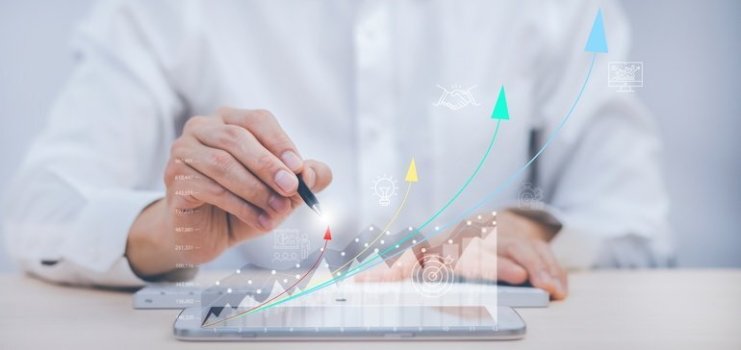K
Kathleen Martin
Guest
As companies navigate the unpredictability of COVID-19 and finance continues an accelerated phase with Big Data and predictive analytics, AI is making its case for inclusion in business forecasting.
Like CRMs, which have evolved from being a "nice to have" to a "need to have" over time, forecasting is becoming essential to a company's bottom line. It's what helps a business cover operating expenses, buy more inventory, market new products and attract new investments. But traditional models can no longer keep up with changing macroeconomic conditions, and AI-based models add a level of predictability and adaptability that is now crucial.
Traditional forecasting models fall short
On any given day, traditional forecasting might achieve 75% accuracy (compared to AI's potential to reach much higher). But why is this method more limiting? Traditional models lack adaptability. They can only take in a limited amount of data and variables compared to AI and machine learning models, which can take unlimited internal and external data sets.
Traditional forecasting also requires an extended amount of time to evaluate projections versus actuals and adjust assumptions. The assumptions these models use are often high-level metrics that don't tie into the operational realities of the business. AI, however, offers deeper granularity and updates its forecasts at a daily rate, allowing businesses to react and adjust much faster.
Unfortunately, many companies avoid AI as a mere "nice to have," and many that adopt AI abandon their models or don't realize its full ROI. As the AI/Data/BI Product Director at Paro, where we've operationalized AI into our forecasting models, I have come away with some important lessons for implementing AI forecasting and bringing it to its full potential.
Lesson one: Go granular
Many companies currently use a top-down approach for forecasting, in which they focus their model on top-line financial projections. I recommend doing the opposite.
Instead, each company project should get its own AI forecast. The sum of those forecasts equals the top-line performance. This approach increases forecast accuracy and makes it easier to identify a culprit when performance doesn't meet expectations.
Continue reading: https://www.cfodive.com/spons/demystifying-ai-forecasting-why-and-how-your-business-should-implement-sma/616563/
Like CRMs, which have evolved from being a "nice to have" to a "need to have" over time, forecasting is becoming essential to a company's bottom line. It's what helps a business cover operating expenses, buy more inventory, market new products and attract new investments. But traditional models can no longer keep up with changing macroeconomic conditions, and AI-based models add a level of predictability and adaptability that is now crucial.
Traditional forecasting models fall short
On any given day, traditional forecasting might achieve 75% accuracy (compared to AI's potential to reach much higher). But why is this method more limiting? Traditional models lack adaptability. They can only take in a limited amount of data and variables compared to AI and machine learning models, which can take unlimited internal and external data sets.
Traditional forecasting also requires an extended amount of time to evaluate projections versus actuals and adjust assumptions. The assumptions these models use are often high-level metrics that don't tie into the operational realities of the business. AI, however, offers deeper granularity and updates its forecasts at a daily rate, allowing businesses to react and adjust much faster.
Unfortunately, many companies avoid AI as a mere "nice to have," and many that adopt AI abandon their models or don't realize its full ROI. As the AI/Data/BI Product Director at Paro, where we've operationalized AI into our forecasting models, I have come away with some important lessons for implementing AI forecasting and bringing it to its full potential.
Lesson one: Go granular
Many companies currently use a top-down approach for forecasting, in which they focus their model on top-line financial projections. I recommend doing the opposite.
Instead, each company project should get its own AI forecast. The sum of those forecasts equals the top-line performance. This approach increases forecast accuracy and makes it easier to identify a culprit when performance doesn't meet expectations.
Continue reading: https://www.cfodive.com/spons/demystifying-ai-forecasting-why-and-how-your-business-should-implement-sma/616563/

